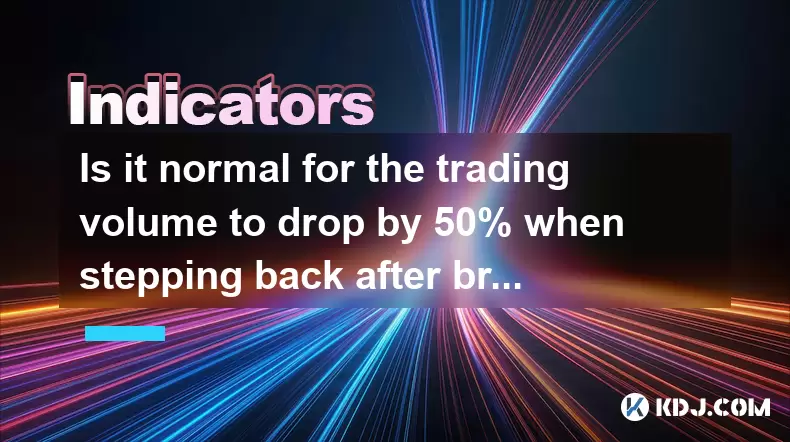-
 Bitcoin
Bitcoin $120400
1.77% -
 Ethereum
Ethereum $3615
7.90% -
 XRP
XRP $3.580
17.84% -
 Tether USDt
Tether USDt $1.001
0.06% -
 BNB
BNB $729.4
1.25% -
 Solana
Solana $179.9
5.04% -
 USDC
USDC $0.0000
0.01% -
 Dogecoin
Dogecoin $0.2311
8.22% -
 TRON
TRON $0.3226
4.04% -
 Cardano
Cardano $0.8490
12.85% -
 Hyperliquid
Hyperliquid $46.45
0.72% -
 Stellar
Stellar $0.4913
8.54% -
 Sui
Sui $4.027
2.00% -
 Chainlink
Chainlink $18.51
11.67% -
 Hedera
Hedera $0.2818
21.51% -
 Avalanche
Avalanche $24.03
7.40% -
 Bitcoin Cash
Bitcoin Cash $508.5
2.90% -
 Shiba Inu
Shiba Inu $0.00001496
3.24% -
 UNUS SED LEO
UNUS SED LEO $8.961
1.83% -
 Toncoin
Toncoin $3.264
3.13% -
 Litecoin
Litecoin $104.6
8.15% -
 Polkadot
Polkadot $4.389
6.11% -
 Uniswap
Uniswap $9.924
10.63% -
 Monero
Monero $337.9
0.49% -
 Pepe
Pepe $0.00001376
2.79% -
 Bitget Token
Bitget Token $4.830
2.46% -
 Ethena USDe
Ethena USDe $1.001
0.05% -
 Dai
Dai $1.000
0.02% -
 Aave
Aave $325.2
1.66% -
 Bittensor
Bittensor $423.7
-0.85%
Is it normal for the trading volume to drop by 50% when stepping back after breaking through the downward trend line?
A drop in trading volume after a breakout can signal consolidation or profit-taking, but it doesn't always mean the trend is reversing.
Jun 29, 2025 at 10:36 pm

Understanding Trading Volume and Its Significance
Trading volume refers to the total number of shares or contracts that are traded during a specific period, typically within a single trading session. In cryptocurrency markets, volume plays a crucial role in confirming price movements and trend reversals. A sudden drop in volume can raise concerns among traders, especially when it occurs after a significant technical event like breaking through a downward trend line.
When analyzing price charts, volume acts as a supporting indicator. For instance, if a cryptocurrency breaks out of a downtrend with high volume, it suggests strong buying pressure and validates the breakout. However, if volume declines significantly shortly afterward, it may signal hesitation or lack of conviction from market participants.
Key takeaway: A drop in volume doesn’t always mean a reversal is imminent, but it should prompt further investigation into the strength of the breakout.
What Happens After Breaking Through a Downward Trend Line?
Breaking above a downward trend line is often seen as a positive development for buyers. It indicates that the selling pressure has weakened and that bulls have taken control. This type of break is considered a technical signal that a downtrend may be ending or reversing.
However, not all breakouts are followed by immediate upward momentum. Sometimes, the price consolidates after the breakout, which can cause trading volume to decline temporarily. This consolidation phase allows traders to reassess the new price levels and decide whether to enter or exit positions.
- Traders may take profits after a successful short-term rally
- Institutional investors might pause before committing more capital
- Retail traders may hesitate due to uncertainty about the sustainability of the move
Important: The initial breakout with sufficient volume matters more than what happens immediately afterward.
Why Can Trading Volume Drop After a Breakout?
A 50% reduction in volume after a breakout isn't uncommon. There are several reasons why this could happen:
- Profit-taking: Some traders may sell their holdings after seeing gains, leading to a temporary decrease in volume.
- Market indecision: If the price moves sideways post-breakout, traders may wait for clearer signals before placing new orders.
- Lack of news or catalysts: Without fresh developments, interest in the asset may wane, causing volume to dip.
- Institutional accumulation: Large players may buy quietly without creating spikes in volume.
It’s important to distinguish between a healthy pullback and a failed breakout. A healthy consolidation phase usually sees shrinking volume while prices stabilize. In contrast, a sharp increase in selling volume would suggest a stronger likelihood of failure.
Note: Volume should be analyzed alongside other indicators like moving averages and RSI to get a more complete picture.
How to Analyze Price Action Alongside Volume
To better understand whether a volume drop is normal or concerning, it's essential to look at the price action occurring simultaneously. Here's how you can analyze them together:
- Check candlestick patterns: Look for signs of bullish continuation or bearish exhaustion after the breakout.
- Watch for support retests: A retest of the broken trend line with strong support can confirm the validity of the breakout.
- Observe volatility levels: Lower volatility during consolidation is natural and expected after a sharp move.
For example, if the price continues to hold above the previously broken trend line and forms higher lows, the breakout still looks valid even if volume dips.
Critical point: Volume alone shouldn’t dictate trading decisions — it must be used in conjunction with price behavior and context.
Examples from Real Cryptocurrency Charts
Let’s consider some real-world scenarios where volume dropped after a breakout:
Bitcoin (BTC) in early 2021: After breaking a long-term downward trend line, BTC experienced a sharp rally followed by a multi-week consolidation phase with reduced volume. The consolidation eventually led to a powerful next leg up.
Ethereum (ETH) mid-2022 rebound: ETH broke above a key downtrend line during a broader market recovery. Following the breakout, volume dipped as the price moved sideways for weeks before resuming its uptrend.
These examples show that a drop in volume after a breakout doesn’t necessarily invalidate the move. Instead, they illustrate that consolidation and volume contraction can be part of a larger, healthier trend.
Insight: Historical chart behavior shows that volume drops after breakouts can be normal parts of market cycles.
Frequently Asked Questions
Q: Does low volume after a breakout always indicate weakness?
No, low volume after a breakout doesn’t always indicate weakness. It can reflect profit-taking, consolidation, or quiet accumulation by large traders. As long as the price remains above key support levels, the breakout may still be valid.
Q: How much volume decline is considered normal after a breakout?
There’s no exact percentage, but a 30–60% drop in volume following a breakout is common. What matters most is whether the price continues to respect the new trend direction and whether there are signs of renewed buying pressure later.
Q: Should I sell if I see a 50% drop in volume after a breakout?
Not necessarily. Selling solely based on volume is risky. Instead, assess the broader context, including price action, support/resistance levels, and other technical indicators before making a decision.
Q: What tools can help me track volume changes effectively?
Use platforms like TradingView, CoinMarketCap, or CoinGecko that display volume profiles. Overlaying volume bars directly on your chart and using indicators like On-Balance Volume (OBV) or Volume Weighted Average Price (VWAP) can also help monitor shifts in volume dynamics.
Disclaimer:info@kdj.com
The information provided is not trading advice. kdj.com does not assume any responsibility for any investments made based on the information provided in this article. Cryptocurrencies are highly volatile and it is highly recommended that you invest with caution after thorough research!
If you believe that the content used on this website infringes your copyright, please contact us immediately (info@kdj.com) and we will delete it promptly.
- Bitcoin, Cloud Mining, Crypto Wealth: Riding the Bull Run in Style
- 2025-07-18 12:30:12
- Ethereum Gas Fees, ERA Airdrop: A New Yorker's Take on Crypto Chaos
- 2025-07-18 12:50:12
- Bitcoin, Altcoins, and the Crypto Market: Navigating Trump's Crypto Ventures and the Evolving Digital Landscape
- 2025-07-18 12:50:12
- Bitcoin Holdings and the Smarter Web: A Match Made in Digital Heaven?
- 2025-07-18 12:10:12
- Bitcoin, MSTR & Saylor's Strategy: A Winning Trifecta?
- 2025-07-18 08:30:13
- Bitcoin Mortgages Down Under: A New Wave in Australian Homeownership?
- 2025-07-18 08:50:12
Related knowledge

Advanced RSI strategies for crypto
Jul 13,2025 at 11:01am
Understanding the Basics of RSI in Cryptocurrency TradingThe Relative Strength Index (RSI) is a momentum oscillator used to measure the speed and chan...

Crypto RSI for day trading
Jul 12,2025 at 11:14am
Understanding RSI in the Context of Cryptocurrency TradingThe Relative Strength Index (RSI) is a momentum oscillator used to measure the speed and cha...

Crypto RSI for scalping
Jul 12,2025 at 11:00pm
Understanding RSI in the Context of Crypto TradingThe Relative Strength Index (RSI) is a momentum oscillator widely used by traders to measure the spe...

What does an RSI of 30 mean in crypto
Jul 15,2025 at 07:07pm
Understanding RSI in Cryptocurrency TradingRelative Strength Index (RSI) is a momentum oscillator widely used in cryptocurrency trading to measure the...

What does an RSI of 70 mean in crypto
Jul 13,2025 at 06:07pm
Understanding the RSI Indicator in Cryptocurrency TradingThe Relative Strength Index (RSI) is a widely used technical analysis tool that helps traders...

Does RSI work in a bear market for crypto
Jul 16,2025 at 01:36pm
Understanding RSI in Cryptocurrency TradingThe Relative Strength Index (RSI) is a momentum oscillator used by traders to measure the speed and change ...

Advanced RSI strategies for crypto
Jul 13,2025 at 11:01am
Understanding the Basics of RSI in Cryptocurrency TradingThe Relative Strength Index (RSI) is a momentum oscillator used to measure the speed and chan...

Crypto RSI for day trading
Jul 12,2025 at 11:14am
Understanding RSI in the Context of Cryptocurrency TradingThe Relative Strength Index (RSI) is a momentum oscillator used to measure the speed and cha...

Crypto RSI for scalping
Jul 12,2025 at 11:00pm
Understanding RSI in the Context of Crypto TradingThe Relative Strength Index (RSI) is a momentum oscillator widely used by traders to measure the spe...

What does an RSI of 30 mean in crypto
Jul 15,2025 at 07:07pm
Understanding RSI in Cryptocurrency TradingRelative Strength Index (RSI) is a momentum oscillator widely used in cryptocurrency trading to measure the...

What does an RSI of 70 mean in crypto
Jul 13,2025 at 06:07pm
Understanding the RSI Indicator in Cryptocurrency TradingThe Relative Strength Index (RSI) is a widely used technical analysis tool that helps traders...

Does RSI work in a bear market for crypto
Jul 16,2025 at 01:36pm
Understanding RSI in Cryptocurrency TradingThe Relative Strength Index (RSI) is a momentum oscillator used by traders to measure the speed and change ...
See all articles

























































































